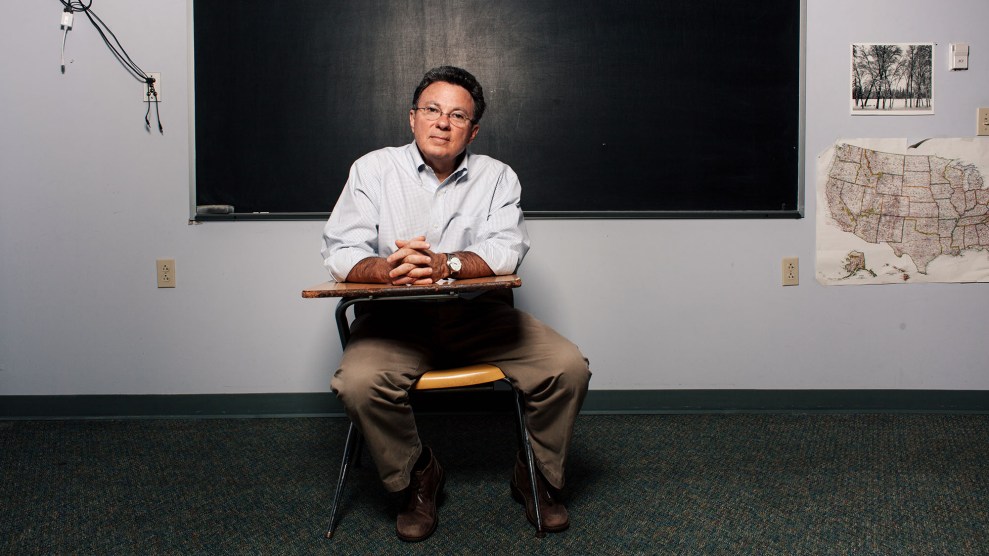This story was published in partnership with ProPublica.
Beside a highway in Bryan, Texas, tucked between a motorcycle bar and the county jail, stands a low-slung, sprawling complex with tinted windows, sandstone walls, and barbed wire lining parts of its roof. A roadside sign identifies it as the Brazos County Juvenile Justice Center.
One Friday afternoon last October, after an incident at nearby Arthur L. Davila Middle School, a police officer arrested 13-year-old Trah’Vaeziah Jackson and brought her to the juvenile detention facility. She cried as employees patted her down, cut off her hair extensions, and took her photo and fingerprints. She was served dinner—chicken nuggets, mashed potatoes, and an apple in a styrofoam box with a carton of milk—but had no appetite.
In the shower room, guards applied thick anti-lice shampoo to Trah’Vaeziah’s hair. As she washed and combed it, clumps fell out. Afterwards, she reluctantly changed from her school clothes, a T-shirt and jeans, into the detention uniform, an orange shirt with matching shorts. Then she was locked in her cell, which contained a sink, a toilet, and, instead of a bed, a stuffed blue mat atop a brick base. High on the wall was a sliver of a window, but she wasn’t tall enough to see outside.
Only after 8pm was she permitted a phone call. She called her mother, and sobbed into the receiver. How could this accident have turned into a jail sentence?
Three decades ago, schools across the country began bolstering discipline to deter juvenile crime. Zero-tolerance policies were introduced, school law enforcement budgets swelled and suspensions, expulsions, and student arrests multiplied.
These punishments, though, are applied unequally. Across the country, hundreds of thousands of students of color, like Trah’Vaeziah, bear the brunt. Black students are almost four times as likely to receive an out-of-school suspension and twice as likely to be arrested as their white peers, according to federal data. The pattern starts early: Even black preschool students are more than three times as likely as their white peers to be suspended from school.
Harsh discipline can backfire, especially when meted out arbitrarily. It may reinforce bad behavior, or encourage students to drop out, creating what sociologists call the “school-to-prison-pipeline.” A suspension increases the likelihood of dropping out by 77 percent, and the incarceration rate of high school dropouts is 63 times higher than that of college graduates, studies show.
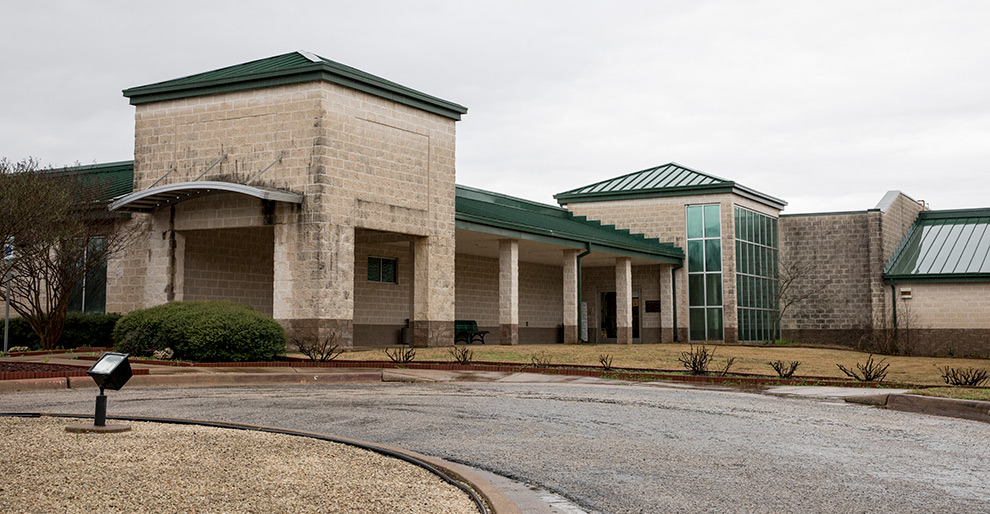
Brazos County Juvenile Justice Center in Bryan, Texas.
Ilana Panich-Linsman for ProPublica
“There’s no doubt that as we’ve escalated security and punishment strategies within schools over the past 25 years that this has had a disparate impact on youth of color,” said Aaron Kupchik, a sociology and criminal justice professor at the University of Delaware. “They are more likely to be seen as problematic, and to be policed and disciplined in schools even when they show similar behaviors as white students.”
Flooded with about 1,500 complaints related to racial discrimination in school discipline between 2011 and 2017, the Obama administration made the issue a priority. Relying on the doctrine of “disparate impact,” which emerged in the 1970s and holds that differential treatment by race amounts to discrimination whether or not there is overt or intentional bias, the US Department of Education opened sweeping investigations into disciplinary disparities, from large school districts such as Minneapolis and Oakland to smaller ones like Bryan, Texas, where Trah’Vaeziah goes to school. It pushed investigators in its regional offices to broaden probes of individual incidents to look for systemic discrimination.
But under Education Secretary Betsy DeVos, the Trump administration is taking a more hands-off approach. DeVos has indicated that she may soon reverse Obama-era guidelines on disparate impact and school discipline, and her hires have signaled this policy shift. Kenneth Marcus, tapped to lead the civil rights office, has argued that disparate impact analysis has significant legal limitations. And Hans Bader, an attorney advisor at the department, has accused the Obama administration of using disparate impact to create “racial quotas.” DeVos is also decentralizing decision-making, giving regional offices more control over investigations.
Quietly, the pullback is already happening. In a June 2017 internal memo leaked to ProPublica, one of DeVos’s top officials ordered investigators to limit proactive civil rights probes rather than expanding them to identify systemic patterns, as the Obama administration had often done in school discipline cases.
Since then, the Education Department has closed at least 65 school discipline investigations opened under Obama, including the Bryan probe, without any mandated reforms, according to an analysis of federal data received by ProPublica through a records request. In at least 50 cases, the department attributed the shutdowns to “moot” allegations or insufficient evidence or details. That was its explanation for letting Bryan off the hook, even though federal investigators there had uncovered numerous examples of black students being punished more harshly than whites for the same offenses.
While the Education Department didn’t respond to ProPublica’s questions about the Bryan case and disparities in school discipline, it has said that the goal of narrowing civil rights investigations is to speed them up.
“Justice delayed is justice denied,” spokeswoman Elizabeth Hill said last month. “OCR seeks to investigate and resolve complaints in a more timely and efficient manner so that OCR enforcement of civil rights laws remains meaningful and relevant to students, advocates, and schools.”
Christie Whitbeck, Bryan’s superintendent of schools, said that the district “fully complied” with the civil rights investigation, which was “closed with no findings of discrimination on the district’s part.”
She said that the district plans to address the racial gap in school discipline in the next school year, and is hiring additional support staff. “As with school districts across the country, we face various challenges regarding student discipline,” Whitbeck said. “Going forward, we will continue to proactively monitor our discipline data, implement positive discipline interventions and character education programs.”
In the mid-19th century, the town of Bryan emerged from a railroad stop serving a community of small farms and a few cotton plantations in the fertile Brazos Valley, 100 miles northwest of Houston. Its agricultural economy originally depended on slavery, and racial segregation and discrimination have characterized the town’s history.
After the Supreme Court ordered schools to desegregate in 1954, integration in Bryan floundered, prompting a black parent to file a federal lawsuit. Despite initial objections from Bryan’s school board, a court sided with the family in 1963, and ordered Bryan to desegregate one grade per year. In 1965, however, the US Department of Justice reviewed Bryan’s fledgling integration plan and found that it did not meet national standards.
The DOJ ordered the district to immediately implement a “freedom of choice” plan, allowing all students—regardless of grade and race—to go to whichever school they wanted. By 1970, hundreds of black students had opted into schools where most students were white, but few white students had chosen to attend schools where most students were black. It wasn’t until the following year, when a new high school opened, that integration truly occurred.
Almost half a century later, discrimination in Bryan takes a different form. Black students are almost four times as likely to be suspended or referred to a disciplinary school as their white peers, according to district data. And black students were also four times more likely to receive tickets in school for minor offenses, such as disrupting class or profanity, according to an analysis of data from 2011. Between 2011 and 2014, black students, who account for about 20 percent of total enrollment, accounted for more than 60 percent of arrests in school.
“For the kids who are being ticketed, arrested, suspended or expelled—who are predominantly black—it tells them that they don’t belong in our public schools, which is a travesty,” said Deborah Fowler, executive director of Texas Appleseed, a social justice advocacy group that spent years examining disciplinary data in Bryan and statewide. “For the students that remain in the classroom and see their peers treated this way, they internalize unhealthy and harmful messages about what that means. That’s the way that implicit bias is formed and gets reinforced.”
Over-represented in punishments, Bryan’s students of color are under-represented in pathways to academic honors and higher education. As of the 2015-2016 school year, black students represented fewer than 10 percent of students in the gifted and talented program, whereas their white peers, who comprised less than a quarter of the district’s total enrollment, accounted for almost 50 percent of students in the gifted program. Only 9 percent of the students taking eighth grade algebra were black, while 41 percent were white, according to district data obtained by Texas Appleseed.
In 2010, an African-American newcomer to Bryan challenged the disciplinary divide. Marjorie Holmon, who had just moved her family to Texas from Maryland a few weeks before, was dumbfounded when her 12-year-old son, De’Angelo came home from school with a misdemeanor ticket.
Holmon had encouraged De’Angelo, who was being bullied by a classmate, to tell his teacher about it. But when he did, the teacher rebuked him, saying, “Here in middle school, we don’t tattle,” according to Holmon.
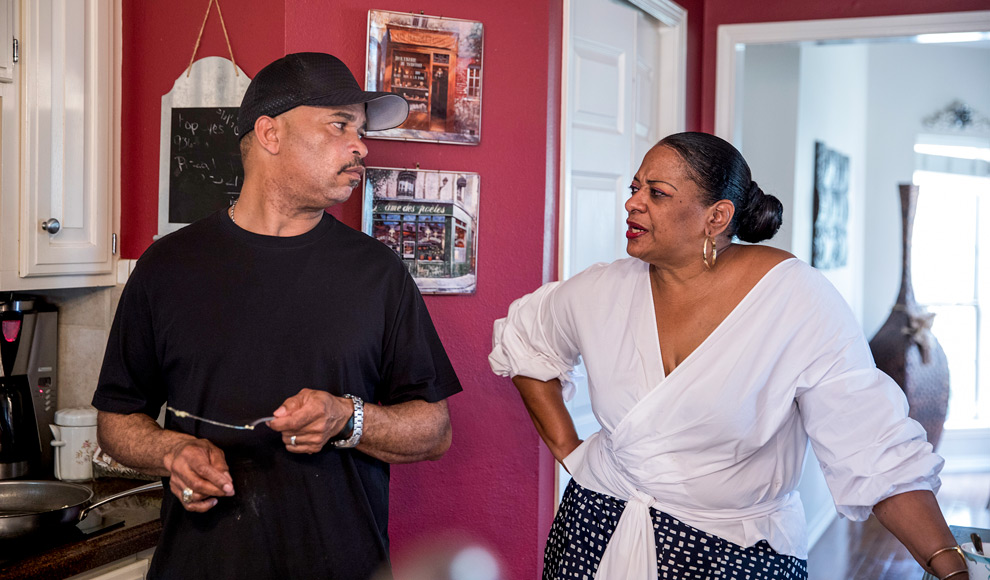
Marjorie Rollins-Holmon, 50, and her husband Willie Holmon, 51, prepare breakfast for their family.
Ilana Panich-Linsman for ProPublica
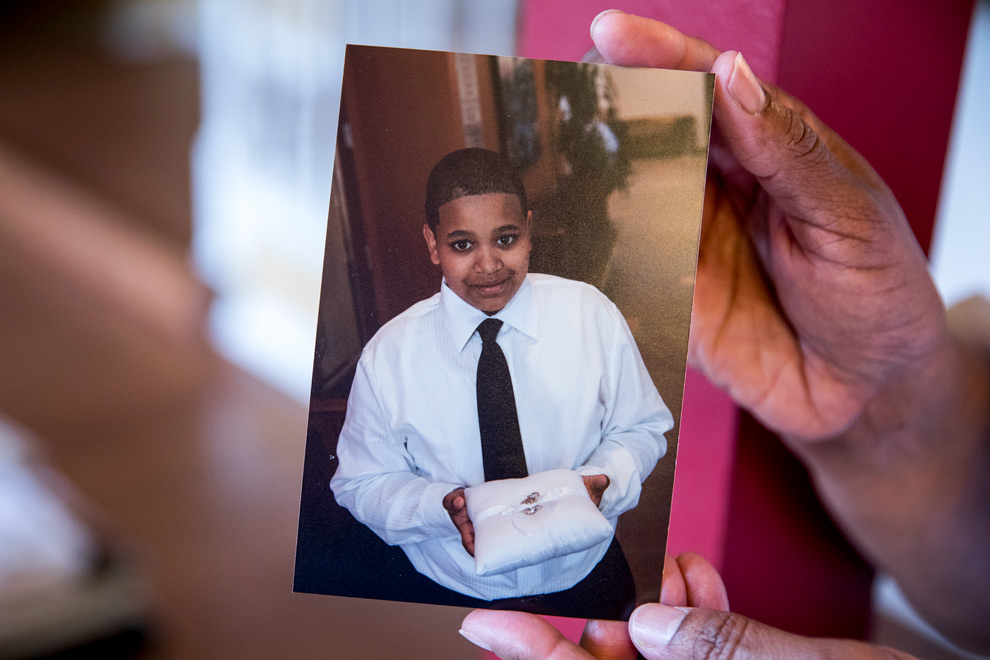
A photograph of D’Angelo Rollins when he was 12 and in middle school, when the incident occurred.
Ilana Panich-Linsman for ProPublica
Without the teacher’s support, De’Angelo defended himself when his classmate struck him. Under the school’s zero-tolerance approach, both boys received Class C misdemeanor tickets from the school’s police officer. To resolve the ticket, De’Angelo would have to appear in adult criminal court, which could result in fines of up to $500, community service hours, and behavior-management courses.
When Holmon arrived at the courthouse and looked around, she recalled, “It was only black and Hispanic students. You only saw one or two Caucasian students. That shined a light for me.”
Holmon reached out to Texas Appleseed and the NAACP Legal Defense Fund, which helped her file a complaint with the US Department of Education in February 2013.
“This thing was bigger than De’Angelo, and we were going to fight for every kid,” Holmon said.
In 2014, 19 months after Holmon’s complaint, another black family—also destined to confront the school district’s uneven justice—showed up in Bryan. With her four children, including Trah’Vaeziah, Yvola Polk moved from Midland, 400 miles away, into a trailer down the street from her sister, who had breast cancer.
“Going through the radiation and chemo, I knew she was going to need me here,” Polk said in a February interview in the kitchen of her trailer, which was illuminated by a dim winter light that filtered through a small window. Two inspirational plaques adorned the otherwise bare walls. She had learned to remove all the light bulbs in her home during the day; otherwise, her 18-year-old son James, who has autism and epilepsy, would attempt to pull them out of their sockets.
For Polk, taking care of James is a full-time job. She administers his medications three times a day, and has to watch him constantly. “He just likes to throw stuff, mess with stuff and his hands—he has octopus hands,” said Polk, who blockades her fridge with duct tape or a table to deter James from eating the family’s sandwich meats and cheese.
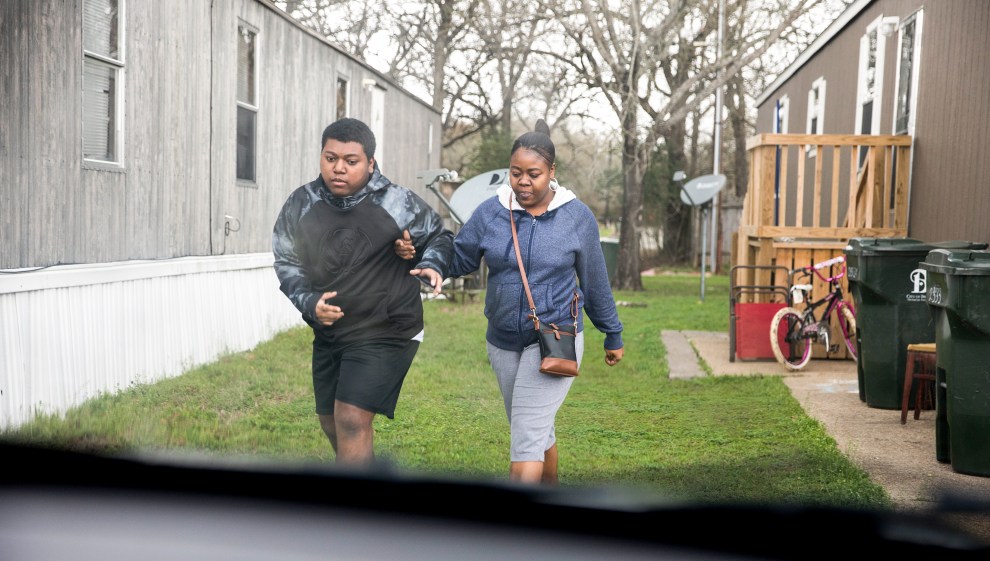
Yvola Polk with her eldest son, who is autistic, at their home in Bryan, Texas.
Ilana Panich-Linsman for ProPublica
Trah’Vaeziah required a different kind of support. As a sixth grader at Davila Middle School, a sandstone building that resembles the detention center five miles away, Trah’Vaeziah was repeatedly victimized, she and her mother said.
After each incident, Polk visited the school, leaving James with another adult. Every time, administrators assured her that the bullying would stop, but they didn’t follow through, she said. Finally, she gave them a tongue lashing, threatening to sit outside the school every day if there was no other way to assure her daughter’s safety.
Later that day, school police officer Bryan Ruebush showed up at her house. Even though he hadn’t been present at her outburst, he wrote her a warning citation for trespassing on school property. According to Kelley McKethan, a spokeswoman for the Bryan Police Department, the school requested that Polk receive a warning for a “veiled threat she made against other students to school staff.”
The bullying subsided as Trah’Vaeziah reached seventh grade, in which she took a course called “Texas Success.” Her class competed with other classes to see which one could do the best job painting popsicle sticks and decorating its hallway door with them. Trah’Vaeziah and other students covered their sticks with glue from a hot glue gun plugged into a classroom wall, she said.
With the teacher in the classroom, out of sight of the students in the hallway, horseplay ensued. As one of Trah’Vaeziah’s classmates headed to the bathroom, she recalled, she playfully gestured that she might touch him with the gluey stick. He dodged her. But on his way back, she again jokingly waved the stick toward him, and accidentally grazed his arm, leaving him with a two-inch burn, she said. She immediately apologized—she had only meant to tease him. The school nurse bandaged his arm.
According to a school disciplinary report, Trah’Vaeziah “took a hot glue gun and burned another student severely on the arm with it.” But Polk, who has watched the hallway surveillance video, said it only showed Trah’Vaeziah with a popsicle stick. It also showed that the teacher, a 2012 college graduate with four and a half years of teaching experience, wasn’t supervising the children, Polk said. “If the teacher would have been watching her, this would’ve never happened in the first place.” The district did not respond to ProPublica’s request to view the surveillance video, and would not respond to questions on the incident, citing confidentiality of personnel matters and discipline of individual students.
The family of the boy declined to press charges against Trah’Vaeziah, according to one of the boy’s relatives, who requested not to be named. Contradicting the school’s report, the relative agreed with Polk that Trah’Vaeziah had touched the boy’s skin with a popsicle stick, not a glue gun. She added that the youth, who is a student of color, was himself unfairly pegged at the school as a troublemaker.
Trah’Vaeziah had rarely been in trouble at school, though the day before she had been isolated in a separate room from her classmates as an in-school suspension for mouthing off to a teacher in the cafeteria during breakfast. Now she was summoned to the assistant principal’s office, where she was met by Ruebush, the same school police officer who had cited her mother. Glancing anxiously at the clock, she wondered aloud whether she would miss the school bus home.
“You’re not going home,” she said Ruebush told her. “You’re going to juvy.”
The stark disparities revealed in Holmon’s complaint attracted national media attention. Under pressure from local advocates, Texas passed legislation in late 2013 that weakened school police officers’ ability to ticket students.
While the new law reduced ticketing, the Bryan district compensated by stepping up other forms of discipline. As of 2016, in-school suspensions were up nearly 22 percent from 2013, amounting to two punishments for every five students in the district, according to district data. And referrals to the district’s alternative school for misbehaving students were on the rise as well. “It’s not as though the discrimination disappears once the practice of ticketing is ultimately eliminated,” said Fowler of Texas Appleseed. “There’s something systemic happening that needs to be addressed regardless of whether or not students are still being ticketed.”

Deborah Fowler is the executive director of Texas Appleseed in Austin, Texas.
Ilana Panich-Linsman for ProPublica
Following the ticketing reform, in March 2014, the federal education department sought more information from the district on all forms of school discipline. The decision to conduct a broad investigation came from headquarters, where the Bryan case was a top priority. Local advocates were concerned, however, that the regional civil rights office wasn’t as enthused about widening the scope of the probe.
“Bryan is one of the cases where the headquarters and the region had different visions about what the case was supposed to be,” said Seth Galanter, a former senior official in the Education Department’s civil rights office under Obama. He currently works for the National Center for Youth Law, which joined in the federal complaint against the Bryan school district.
Over the course of the investigation, federal investigators dug up at least 10 incidents where black students received harsher punishment than their white peers for similar conduct, according to documents obtained by ProPublica through a records request. For example, during the 2012-2013 school year, a black student at Davila, the school Trah’Vaeziah would later attend, received one day of in-school suspension for “failure to follow directives.” Earlier that year, a white student received just one hour of detention for the same offense.
For teachers, cooperating with the federal probe may have carried a risk. One African-American teacher, Evelyn Wallace, filed a complaint with the Education Department in 2015, alleging that the district decided not to renew her contract because she had given information to investigators the previous year. She told them that the district had a history of passing over her and other black teachers for promotions. She also provided names of black students whom she felt had been wrongly punished, and the dates of the incidents. The investigation into her retaliation complaint is ongoing.
Watch ProPublica’s interview with Yvola and Trah’Vaeziah Polk:
“Most of the black students weren’t treated fairly,” said Wallace, who now is an adjunct English teacher at a community college in Houston. “There were some incidents with Caucasian students who were on the hook but walked away scot free,” whereas, “African American students were sent to the juvenile detention.”
The wider mandate had one drawback; it extended the probe’s timeline. Even though federal investigations are supposed to close within the department’s stated goal of 180 days, the Bryan case lingered for years. In the meantime, Holmon and her family left Bryan. De’Angelo graduated from high school. And Donald Trump was elected president.
Perhaps recognizing that time was running short, federal investigators tried to negotiate a settlement with the school district. A February 2017 working draft of the proposed settlement, obtained by ProPublica through a records request, shows that the district would have agreed to take more than a dozen actions to reform its disciplinary system, including reviewing and revising its disciplinary policies, creating additional support services for punished students like mentoring, designating campus behavior coordinators, and educating parents on how to file complaints related to discipline, and conducting annual school reviews.
If those reforms had been adopted, Trah’Vaeziah likely would not have been exiled to the detention center later that year. But the federal government and the district were unable to finalize the agreement.
Within months after Trump came into office, the tide changed. In June 2017, Candice Jackson, an attorney whom DeVos had named as interim assistant secretary for civil rights, drafted an internal memo that sharply reversed the Obama administration’s course. Federal investigators were no longer encouraged to look at complaints through a systemic lens.
Jackson, who had little experience in civil rights law and is best known for ushering Bill Clinton’s sexual misconduct accusers into the audience of the second presidential debate in October 2016, also gave regional offices greater autonomy. Under the Obama administration, regional bureaus often needed clearance from Washington to settle or close a case, especially those relating to school discipline. Jackson allowed regional offices to determine how to settle cases.
Some regional offices have been able to resolve disparate impact cases in favor of student complainants. This past February, a complaint filed in 2013 alleging discriminatory school discipline practices in Durham, N.C., was settled, requiring the district to develop a new disciplinary approach, hire a discipline supervisor, and bolster data collection.
The Texas office took a different tack. Following the Jackson memo, it backpedaled on the Bryan investigation. Page Baird, a senior equal opportunity specialist in the Texas office, wrote to the Bryan complainants in late July 2017, informing them that the investigation no longer encompassed all forms of school discipline.
“OCR has revised the scope of its investigation of this complaint,” she wrote, adding that the probe would now be limited to police ticketing in Bryan’s schools.
Since ticketing in Bryan had subsided, the decision to disregard other forms of discipline was tantamount to ending the investigation. Taylor D. August, the director of Texas’s regional civil rights office, and chief civil rights attorney Angela Hights made it official in September 2017, notifying the complainants that there was “insufficient evidence to support a conclusion of noncompliance.”
As Ruebush and Trah’Vaeziah left the middle school and headed to the detention facility on that Friday afternoon last October, she asked if she could call her mother, who would be worried when she didn’t come home on a bus. He said no, and told her to turn off her cell phone and put it, along with her identification card and pencils, in a brown bag. Instead, the assistant principal called Polk and informed her that her daughter had been arrested and transferred to the detention center.
Kelley McKethan, a spokeswoman for the Bryan Police Department, said she could not discuss the case because it involved a juvenile. Generally, assaults in which someone “intentionally, knowingly, or recklessly” causes an injury are handled by police “and the school has no say in whether a student is arrested or not,” she said. “Remember there are multiple sides to a story as well as evidence that is taken into consideration.”
McKethan added that “our agency and our officers are held to an extremely high standard. Any indication of racial bias is handled immediately and is not tolerated at any level.”
The next day, Polk made her way to the detention facility. She sat before a thick slab of glass in the visiting room, which was cramped and smelled of disinfectant. When her daughter appeared on the other side, she noticed that Trah’Vaeziah’s gregarious buoyancy had deflated, her eyes were inflamed from hours of crying, and her thick, foot-long braids were gone. The detention center did not respond to ProPublica’s questions.
Polk tried to comfort her. “I’m going to try to do everything I can to get you out,” she told her daughter through a small speaker embedded inside the glass pane.
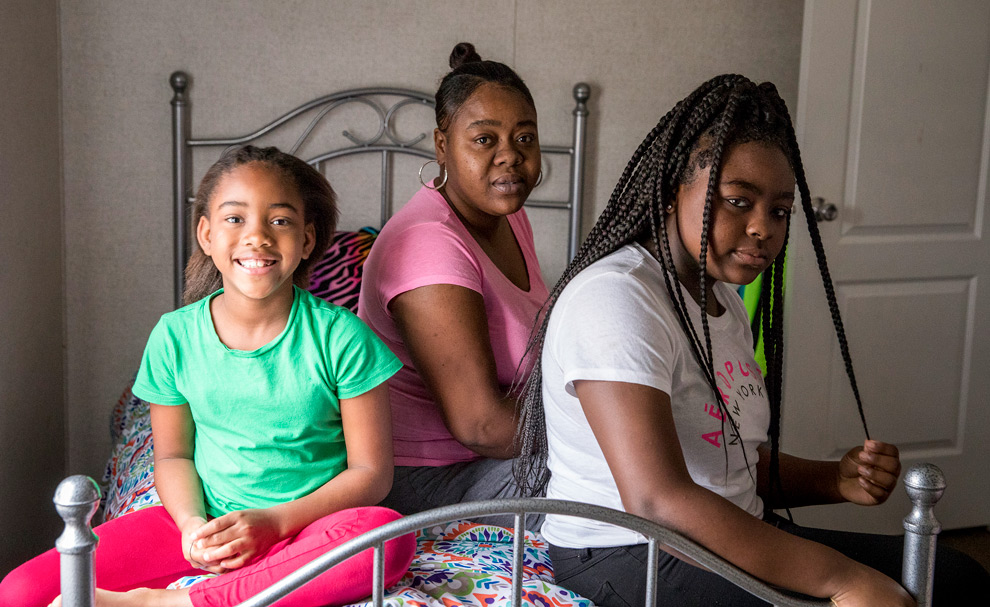
Trah’Vaeziah, 13, right, with her mother and younger sister in their home in Bryan, Texas.
Ilana Panich-Linsman for ProPublica
The center is supposed to hold hearings within 48 hours. But because the center’s courtroom is closed on weekends, Trah’Vaeziah’s hearing took place on Monday, three days after her arrest. The proceedings went swiftly. Judge Misty Swan, who was presiding over the juvenile court that morning, released Trah’Vaeziah from the detention facility on condition that she do 20 hours of community service and write an apology letter. She also stipulated that Trah’Vaeziah would have to keep a clean record until the next court date and couldn’t access social media, cell phones, or cash. Any violation of the agreement would result in further detention.
“They want to give this harsh punishment for something that we could’ve easily resolved at the schoolhouse,” said Polk. “They’re taking it too far for a kid.”
Trah’Vaeziah faced further consequences. Days after her release, at a due process hearing at the school, she was sentenced to five weeks in the district’s disciplinary alternative school. When her mother appealed, the stint was reduced to about two weeks.
The disciplinary school epitomizes the district’s racial disparities. About 44 percent of students referred to the school are black, more than twice the district-wide proportion, according to 2016-17 district data.
For Trah’Vaeziah, the disciplinary school felt as institutional as the juvenile detention facility, except that she was able to start and end her days at home. Each morning, she put on the alternative school’s uniform: a cotton polo shirt tucked into khaki pants with an elastic waist.
As research has shown, juvenile arrests can increase student misconduct, perpetuating a disciplinary cycle as children begin to internalize a “criminal” label. Trah’Vaeziah was no exception. In January 2018, after a classmate pulled Trah’Vaeziah’s hair, provoking a scuffle, she was sent back to the disciplinary school, which she currently attends. The school emphasizes computer-based instruction, so Trah’Vaeziah and the other students receive minimal personal instruction from teachers. They mainly watch video lectures and complete lessons online.
Since entering the disciplinary school, Trah’Vaeziah’s grades have suffered. An official from the school informed Polk that if her daughter’s grades do not improve, she may have to repeat seventh grade. For black students in Texas, repeating a grade multiplies the chance of dropping out of school nearly six fold, according to a recent study.
In late March, Polk filed complaints with the school district and with the civil rights office in Dallas. Soon afterwards, a truancy officer served Polk with a court summons. The officer informed her she was being cited for keeping her daughter out of school during the appeal of Trah’Vaeziah’s first disciplinary school referral—almost six months earlier.
Polk is fed up. “My child might grow up to be a doctor and save one of your kid’s lives, but the school system don’t see it like that,” she said. “It’s just a pattern, like, this one is in trouble, and this one going to be in trouble, and this one is going to be just like this one.”
With research assistance by Megan Rodriguez.


